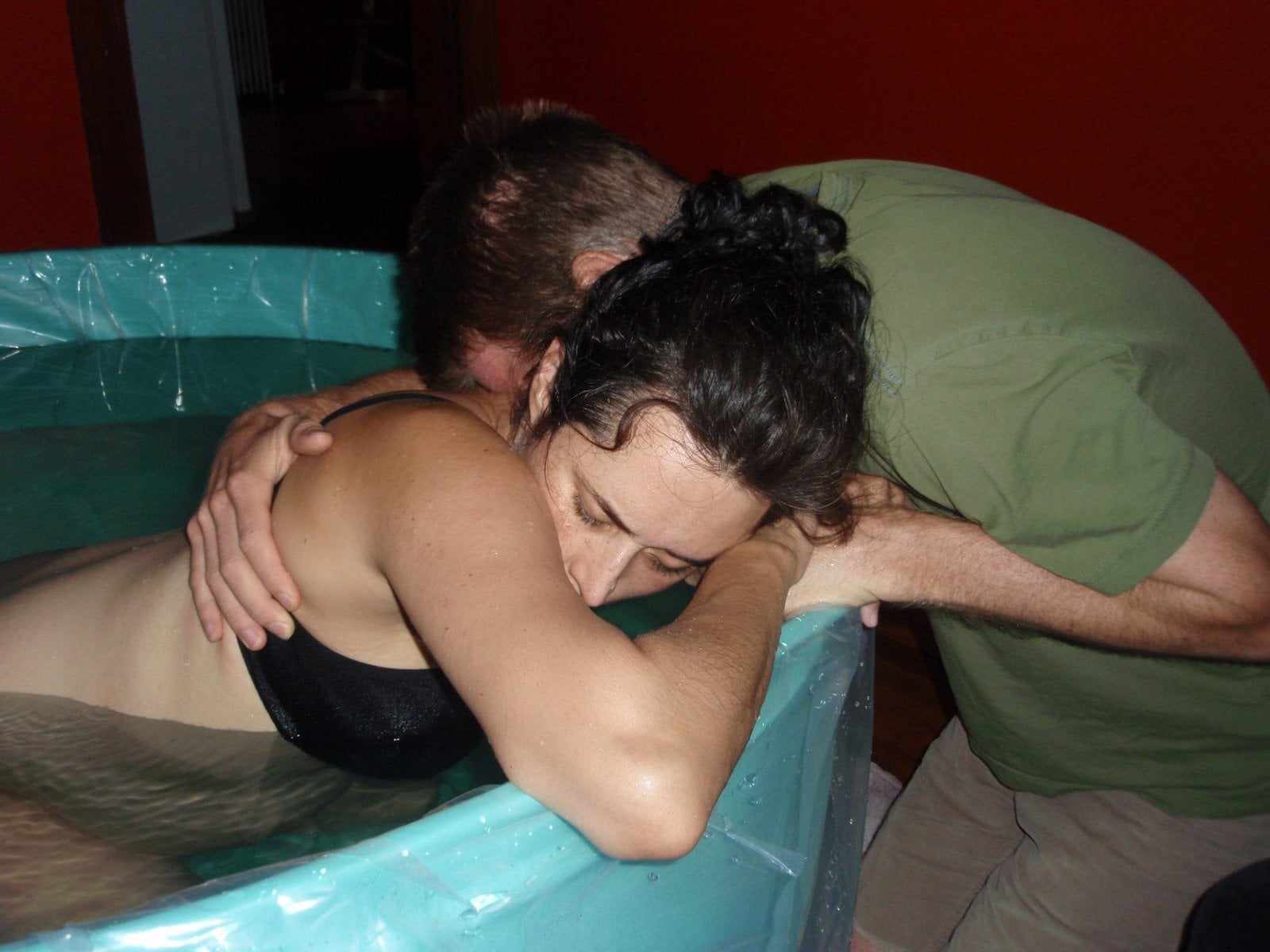
VBAC
Q: What is VBAC, and what is VBAMC?
A: VBAC stands for Vaginal Birth After Cesarean, while VBAMC refers to Vaginal Birth After Multiple Cesareans. Both options involve delivering a baby vaginally after a previous cesarean section. For VBAC and VBAMC mothers, it’s crucial to have the right support and careful planning to ensure the safest and most positive birth experience possible. I offer virtual support to help you navigate your choices and, depending on your location, in-home emotional and physical support to assist with your VBAC or VBAMC journey.
Q: How do you support VBAC and VBAMC mothers?
A: I treat all VBAC mothers like any other mother, addressing their worries, need to process and heal from their prior experiences, and build their confidence back up to help them remember their own power, and explore their options for achieving their goals. I offer a range of services to support VBAC and VBAMC mothers, including:
- Virtual Consultations: To help you understand the risks, benefits, and options for VBAC or VBAMC, ensuring you’re well-prepared and informed.
- Evidence-Based Resources: Providing you with research and information about the latest studies on VBAC and VBAMC to help you make empowered decisions about your birth.
- Emotional and Mental Support: Birth after a cesarean can bring up concerns and fears. I offer emotional support to help you overcome any anxiety and build confidence in your ability to have a successful vaginal birth.
- In-Home Support (in some states): If you’re eligible, I provide physical and emotional support during labor and delivery, ensuring you feel safe, supported, and empowered.
- Customized Birth Planning: Together, we’ll create a birth plan tailored to your needs and preferences, taking into account any past birth experiences, your health, and the specific circumstances of your pregnancy.
Q: Is VBAC safe?
A: Yes, VBAC is generally safe for most women, particularly when they meet certain criteria, such as a low transverse cesarean incision, a healthy pregnancy, and appropriate prenatal care. VBAMC is also possible, but it comes with additional considerations due to the number of previous cesarean sections. I’ll work with you to assess your individual situation, review your medical history, and help you understand the risks and benefits to ensure the safest birth for you and your baby.
Q: What are the risks associated with VBAC and VBAMC?
A: While VBAC and VBAMC are safe for many women, they do carry some risks, including:
- Uterine Rupture: This is a rare but serious risk where the previous cesarean scar could rupture during labor. The risk increases slightly with each cesarean, but it’s still low, especially if you meet the right criteria for VBAC or VBAMC.
- Placental Issues: In some cases, previous cesareans can affect placental implantation, which may lead to complications.
- Longer Labor: Some women may experience a longer labor for VBACs or VBAMCs, particularly if they have had multiple cesareans.
We’ll carefully discuss your history, health, and risks during your consultations, so you can make a fully informed decision. You will also be prepared with a backup plan, just in case an unexpected complication arises during labor.
Q: How can I increase my chances of a successful VBAC or VBAMC?
A: Several factors can increase your chances of a successful VBAC or VBAMC, including:
- Choosing the right caregiver: Working with a supportive midwife or OB who is experienced in VBAC and VBAMC.
- Spontaneous labor: A spontaneous onset of labor (without induction) is ideal for VBAC or VBAMC.
- Being in good health: Maintaining a healthy pregnancy and avoiding complications like gestational diabetes or high blood pressure will help increase your chances.
- Having a supportive environment: Feeling emotionally supported, prepared, and calm during labor can help ensure a smoother process.
- Proper fetal position: Encouraging baby to be in an optimal position for birth can reduce the likelihood of complications, but ultimately there is only so much a mother can do: staying active, getting regular chiropractic care, Spinning babies, Miles Circuit, etc. The rest is in God’s hand, but I assure you that the body is almost always able to sort out positional challenges when given the time and support it needs to.
Q: What makes a good candidate for VBAC or VBAMC?
An ideal candidate for VBAC or VBAMC generally meets the following criteria:
- A previous cesarean with a low transverse incision (horizontal incision along the bikini line) rather than a vertical incision.
- No more than two previous cesareans (though many women with more than two prior cesareans may still be candidates depending on individual circumstances).
- No other major complications (such as placenta previa, active infections, or a significant uterine abnormality).
- Good physical and emotional health: You should be in good health and mentally prepared for the birth process. Your diet should be free from refined and inflammatory foods.
- A favorable pelvic shape: Having an adequate pelvic structure can also improve the chances of a successful vaginal birth. And thankfully, nearly every woman does…even those who have been told they do not.
Q: How do you prepare for a VBAC or VBAMC?
Preparation is key to a successful VBAC or VBAMC. Here’s how we can work together to prepare:
- Create a flexible birth wishes list: We’ll discuss your preferences, including the environment in which you want to labor, your wishes for interventions (or lack thereof), and how to manage any challenges during labor.
- Learn as much as you can about normal physiological birth. See my childbirth prep page for resources. You own your experience, no matter what hand you are dealt and it’s important that you feel ready to embrace the journey.
- Physical Preparation: I’ll guide you on exercises and strategies to help prepare your body for birth, including optimal fetal positioning techniques and ways to reduce the likelihood of complications. Most important, stay active, unless your provider has given you a reason not to!!
- Emotional Support: VBAC and VBAMC can bring up a lot of emotions. I’m here to help you build confidence, manage fears, and support you in trusting your body’s ability to birth vaginally.
- Continuous Support: Whether I support you virtually or in person, I’ll help you assess your progress and guide you through labor to encourage a positive, empowered experience.
Q: What happens if I need to transfer to the hospital during my VBAC or VBAMC?
A: While VBAC and VBAMC are safe for many women, it’s important to have a backup plan in place. If you need to transfer to the hospital, we will ensure the process is smooth and that you’re well-supported emotionally. I will help you navigate any concerns or decisions you may have to make during the transfer and ensure that you are fully informed and prepared for whatever happens. I’m here to ensure you feel confident and empowered no matter the outcome. I highly encourage having legal representation reserved prior to birth if you plan to decline routine procedures in the hospital such as IV antibiotics, vitamin K for newborn, and the Newborn Screening, as many pediatricians will not respect your choices and on occasion will threaten to take legal custody of a baby if you do not follow their recommendations. While this is rare, it is prudent to have a plan to protect your family. I also strongly encourage meeting a supportive pediatrician, DO, or family doctor that could advocate for release of your healthy baby should you find yourself in a situation of that nature.
Q: How can I get started with your VBAC or VBAMC support?
A: You can reach out via the contact page to schedule an initial consultation. We’ll discuss your medical history, your goals for your upcoming birth, and how I can best support you—whether virtually or in person (depending on your location). I will help you create a birth plan tailored to your needs, provide emotional support throughout your pregnancy, and help you have a safe and positive VBAC or VBAMC experience, if at all possible.
Q: Can I have a freebirth or homebirth if I have had a prior cesarean?
A: Your body is yours alone and it is your right to plan for a homebirth or freebirth as a VBAC/VBAMC mother if you desire to. Research supports that having a trial of labor after prior cesarean (TOLAC) is a very reasonable and overall safe choice for most women. It is not uncommon for conventional providers to dissuade women from having a VBAC based on estimated fetal weight, being postdates, fluid levels, etc. It may be necessary to join VBAC communities to find support in your area.
“The most important thing a woman needs during labor is not a set of medical tools and interventions, but the presence of someone who believes in her.”
– Khadijah Cisse, Midwife

